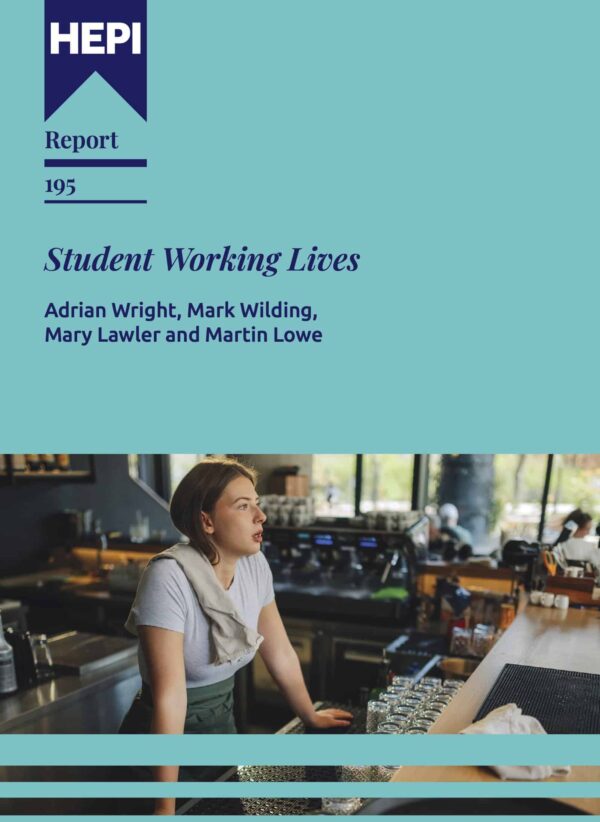Everything Must Change So Everything Can Stay the Same: Internationalisation at a Crossroads
By Vincenzo Raimo, an independent international higher education consultant and a Visiting Fellow at the University of Reading, where he was previously Pro Vice-Chancellor for Global Engagement.
Vincenzo Raimo will be joining David Pilsbury and Janet Ilieva at the International Higher Education Forum (IHEF 2025) on 4 June 2025 to discuss the topic: ‘Outdated policy and unfounded optimism drive British universities to the abyss.’
“If we want things to stay as they are, things will have to change.”
— The Leopard, Giuseppe Tomasi di Lampedusa
UK universities are awash with the language of transformation. Internationalisation and Global Engagement strategies speak of partnerships, student mobility, intercultural learning and global citizenship. Vice-Chancellors and Pro Vice-Chancellors for Internationalisation describe international education as central to institutional values and academic mission. And yet, for many, the real driver is far simpler: money.
There is a widening gap between the rhetoric of internationalisation and the reality of its execution. Strategic plans position it as an enabler of diversity, excellence and global reach, but the day-to-day reality is that it functions as a financial lifeline. In a sector facing significant funding pressures, international student income is often the difference between surplus and deficit. That tension matters. It undermines credibility, risks student experience and can lead institutions to prioritise volume over value.
The quote from The Leopard, Lampedusa’s novel of aristocratic decline during the unification of Italy, captures a central paradox of institutional reform. It speaks to the instinct to embrace the appearance of change in order to preserve the status quo. In recent months, this sentiment has felt uncomfortably familiar in UK higher education. We appear to be entering a period of cosmetic transformation: new job titles, rebranded structures and revised plans, but all too often without the deeper shifts in strategy, culture or resourcing that genuine transformation demands.
This is particularly evident in international student recruitment.
Universities in the UK have long faced political headwinds. International students are welcomed in principle but scrutinised in practice. Brief moments of progress, such as allowing students to bring dependents, are quickly reversed in response to migration debates. The result is unpredictability, which undermines confidence in the UK offer.
Despite this, the UK has historically benefited from a position of passive advantage in international recruitment. We speak the global language of higher education. Our qualifications are widely recognised. Many of our institutions enjoy long-established reputations. And our complex legacy of Commonwealth ties, colonial familiarity and cultural affinity has offered visibility and access in key markets.
But that advantage is fading.
Policy instability is only part of the challenge. Global competition is intensifying, and not just from the traditional English-speaking destinations. European countries are increasingly offering high-quality, English-taught programmes at lower cost, often with clearer post-study pathways. In Asia, more students are opting to stay closer to home, choosing emerging regional providers with improving reputations and stronger cultural fit. The UK can no longer assume it is the default choice.
In response, institutions are making changes, or at least talking about them. The mood music is shifting: towards diversification, resilience and sustainability. Yet much of this amounts to cosmetic change. Beneath the surface, many universities are still operating on the same assumptions, deploying the same strategies, and relying on the same markets and channels as they have for years.
I have argued that recruitment targets are vanity, quality and retention are sanity, but margin is king. Growth in international enrolments may look impressive, but it means little if acquisition costs are rising, if retention is falling, or if students leave feeling unsupported. In one recent project, I found that recruitment costs, dominated by agent commissions, amounted to nearly a third of the net tuition income per student. That model is unsustainable in the long term.
And the consequences are already visible: redundancies, departmental reconfigurations and even the closure of entire disciplines. The pursuit of international income has not protected the sector from financial strain. Rather, it may simply have postponed the difficult decisions needed to build genuinely sustainable institutions.
One apparent solution is transnational education (TNE). There is renewed enthusiasm for TNE as universities seek to diversify income and reach. I have worked with institutions developing long-term TNE partnerships that deliver real benefits: stronger reputation, broader access and more distributed risk. But TNE is not a short-term fix. It takes time to design and deliver well, requires significant investment and cannot plug immediate financial gaps.
Nor can TNE substitute for a broader rethink of international strategy. In my International Student Recruitment Success and TNE Success scorecards, I offer practical frameworks for assessing capabilities, identifying risks and planning more strategically. These tools are designed to help institutions move beyond tactical fixes and focus on longer-term sustainability. Key questions include:
- What is our purpose in internationalisation?
- How distinctive and competitive is our offer?
- Are our structures and resources aligned to support quality and retention?
- And are we being honest about what our strategy is really for, and is that clearly communicated across the institution and to our wider stakeholders?
Too often, international strategies present one set of values, while day-to-day activities pursue another. This misalignment makes success harder to define, measure and achieve.
The danger today is that we confuse activity with progress. Structural tweaks and strategic refreshes may signal intent, but unless they are anchored in purpose and matched by investment, they will not deliver the resilience the sector needs.
Lampedusa’s quote reminds us that change can be used either to preserve the status quo or to enable transformation. The UK higher education sector faces a choice: to make difficult, strategic changes now, or to continue changing just enough to maintain the illusion of stability, while the foundations quietly erode.







Comments
David Palfreyman says:
And in assessing the hoped-for profitability of such recruitment one wonders whether – as with honesty about the leakage by way of recruitment agent fees – the risk of bad debt on fee collection is properly taken into account?
Reply
Vincenzo Raimo says:
David, I provide an international student recruitment costs waterfall in this article in which I include bad debt/ unpaid fees. That has been an increasing cost for some universities, especially those which grew rapidly post Covid on the back of volatile markets
https://thepienews.com/beyond-the-bottom-line-rethinking-recruitment-strategy-and-cost/
Reply
Add comment